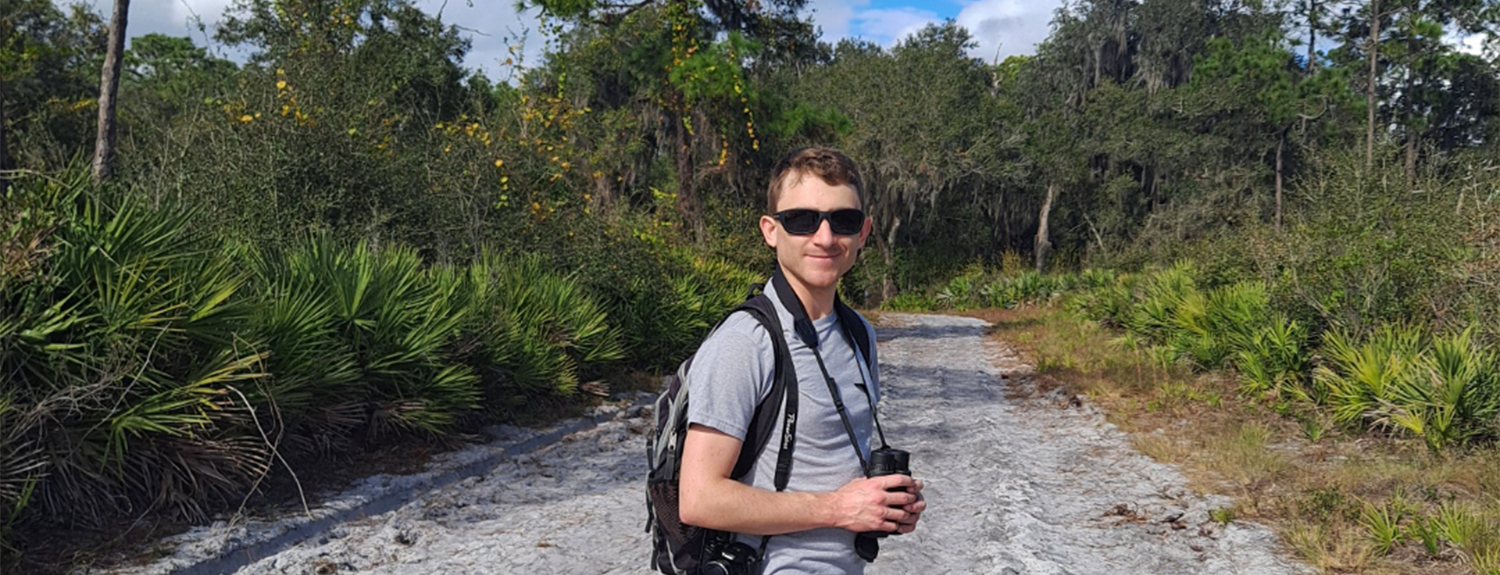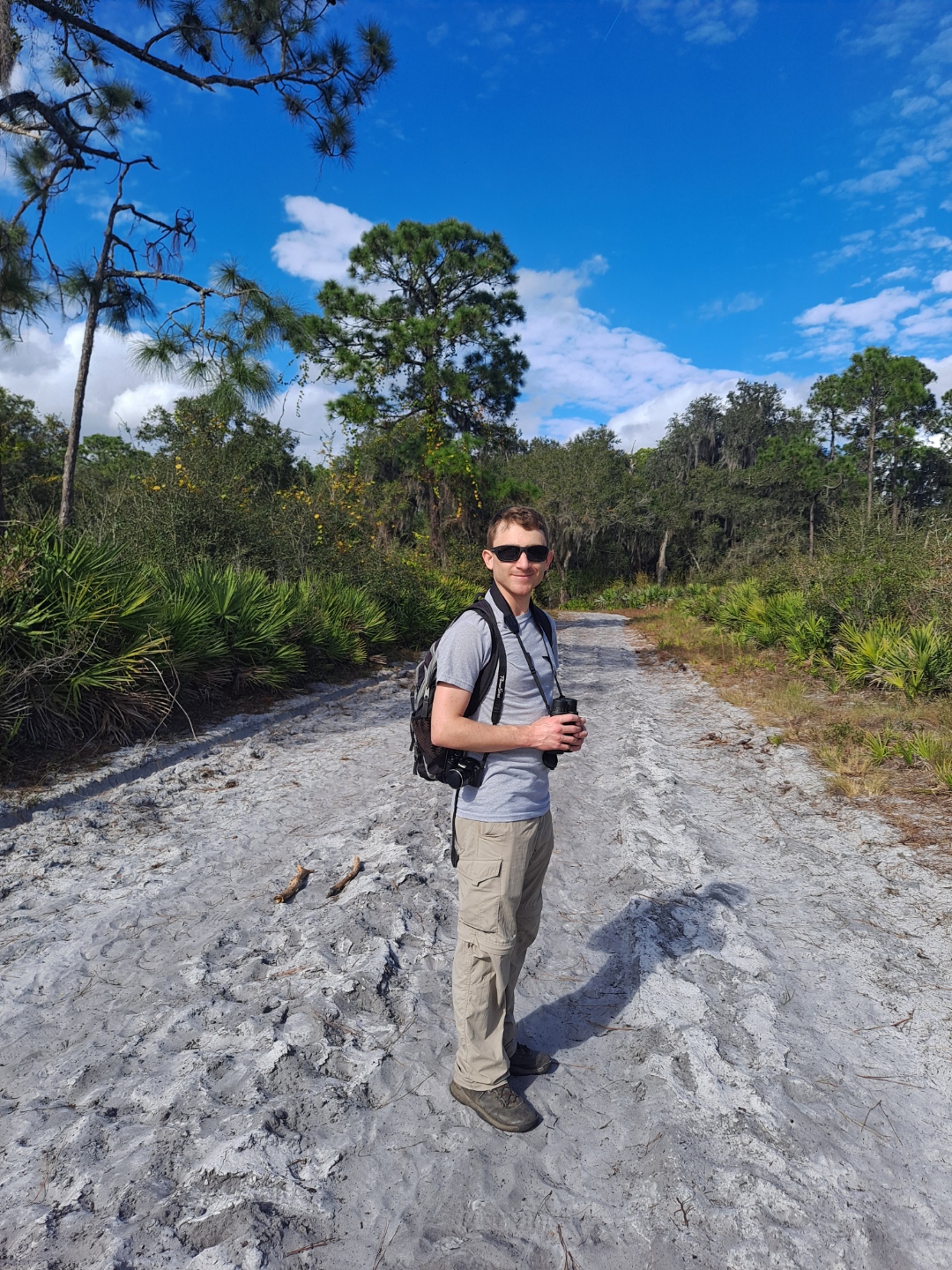
Evan Whiting
Research Q & A
What’s your hometown?
I was born in Syracuse, New York, but I mostly grew up in Tampa, Florida, which I consider to be my hometown.
What are you currently working on?
My dissertation research focuses on squamates (lizards and snakes), one of the largest groups of living vertebrates (> 11,000 recognized species). I’m currently working on analyzing my dataset of CT scans to see how the 3D shapes of squamate teeth relate to their diets. This has been extensively studied in mammals, but not so much in reptiles. If tooth shape is a good indicator of diet in modern squamates, then we can use the shapes of fossilized teeth to predict the diets of extinct squamates, which is another component of my dissertation. Specifically, I’m investigating if/how the diets of extinct lizards changed in response to climate change in the deep past, using fossil evidence.
How did you get started/what drew you to your area of study?
Growing up in Florida, I was very fortunate to be surrounded by amazing wildlife every day. I spent a lot of time during my childhood running around outside and reading about different animals and fossils. I’ve always been particularly fascinated by reptiles, especially crocodylians and lizards, which I’ve had the privilege of conducting research on for nearly a decade now.
Why are you focusing your work in that area?
Reptiles are more than just really awesome animals—they are also very important barometers for the environment. They readily respond to changes in climate, and understanding their responses could help us learn how to better conserve them and their ecosystems. Studying the fossil record offers a unique opportunity to travel back in time and see how reptiles evolved and responded to past climate change events.
Where are you working on research/field work?
The modern squamates I’m studying come from all over the world and are housed in several natural history museum collections, including the Bell Museum. The fossils I’m studying come from the Bighorn Basin of Wyoming and Williston Basin of North Dakota, and are housed in the Florida Museum of Natural History and Science Museum of Minnesota, respectively. The Bighorn Basin fossils represent lizards that lived during a major episode of past global warming 56 million years ago, called the Paleocene-Eocene thermal maximum (PETM), whereas the Williston Basin fossils represent lizards that lived 59 million years ago, during a milder climatic interval before the PETM.
What will your next steps/research be?
I hope to wrap up and eventually publish my dissertation research, and pursue a postdoctoral position that allows me to continue to study modern and fossil reptiles and share my passion for natural history with others through education and outreach. I’m very grateful for the research and outreach opportunities I’ve had at the Bell Museum during my Ph.D., which have helped me learn and grow as both a scientist and educator.



